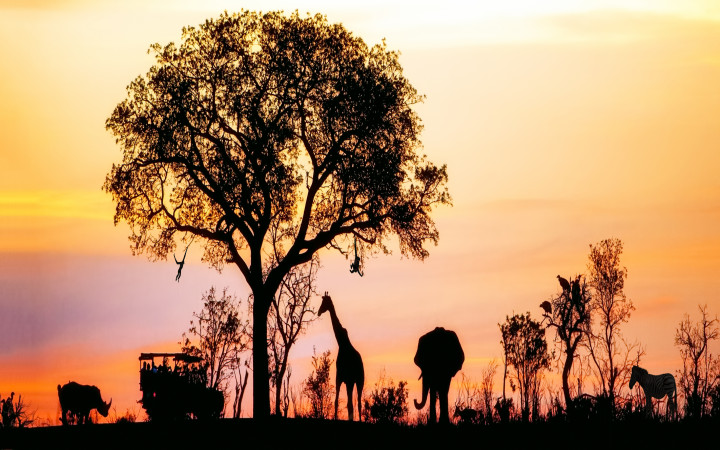Today’s Wonder of the Day was inspired by Lila. Lila Wonders, “What is at the top of the food chain?” Thanks for WONDERing with us, Lila!
If you’re like most kids, you probably hunt for most of your food in the aisles of your local grocery store. Are you hungry for some crunchy green vegetables? Head over to the produce aisle and stalk some wild celery. Does pizza sound better? Just hide out in the frozen food aisle until just the right moment to snatch that frozen pizza from the freezer!
In many places around the world—and for wild animals—finding food to sustain life is not nearly as easy as a trip to the supermarket. In the wild, it often comes down to a simple question: are you predator or prey? And the answer is sometimes both!
All living things need energy. Energy comes from the foods we eat. A food chain is a simple way of explaining how each living thing gets its food. For example, a simple African food chain might consist of three parts: (1) trees and bushes; (2) giraffes; and (3) lions. Giraffes eat trees and bushes for food, and lions eat giraffes.
Each link in a food chain is food for the next link. Food chains always start with plants and end with animals.
Plants are at the bottom of the food chain. Scientists call them producers. That’s because they make their own food. To do so, plants use light energy from the sun, carbon dioxide, and water. This process is called photosynthesis.
Animals, unlike plants, can’t produce their own food. Instead, they must eat plants or other animals. This is why scientists call them consumers.
Consumer animals fall into three categories. Herbivores eat only plants. Carnivores eat only other animals. Omnivores eat both plants and animals. What kind of consumer are you?
In addition to producers and consumers, there are also decomposers. These organisms include bacteria and fungi. They feed on matter. They help the food chain by speeding up the process. This releases minerals back into the soil to be absorbed by plants as nutrients.
Most food chains have only four or five links in them. As you go up a food chain, the amount of energy at each level decreases. That’s because some of the energy is lost in the form of waste or is used up by the organism at that level. That is why it takes many plants to feed a few giraffes. Those few giraffes, in turn, feed one lion.
Most animals are part of many different food chains. They must eat more than one type of food to satisfy their energy needs. All of these interconnected food chains form a more complex structure called a food web.
Humans, for example, are at the center of a very complex food web. We tend to eat many different types of plants and animals. And unlike what you may have read in fairy tales, there aren’t many animals that look at humans as food.
The only creatures who might snack on a human are large predators, such as sharks. However, it’s very rare for humans to be eaten by predators. Most predators have more to fear from humans than we have to fear from them!
What’s included in your food web? The next time you sit down for a meal, think about where your food’s energy may have come from. Did it make its own food through photosynthesis? Snack on many types of plants? Maybe it dined on animals. You may find that your food web is pretty complex, indeed!
Standards: LS1.C, LS2.A, CCRA.L.3, CCRA.L.6, CCRA.R.1, CCRA.R.2, CCRA.R.4, CCRA.R.10, CCRA.SL.1




